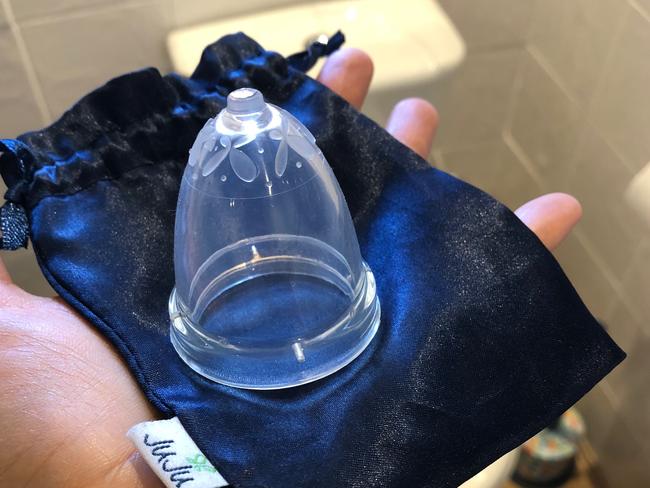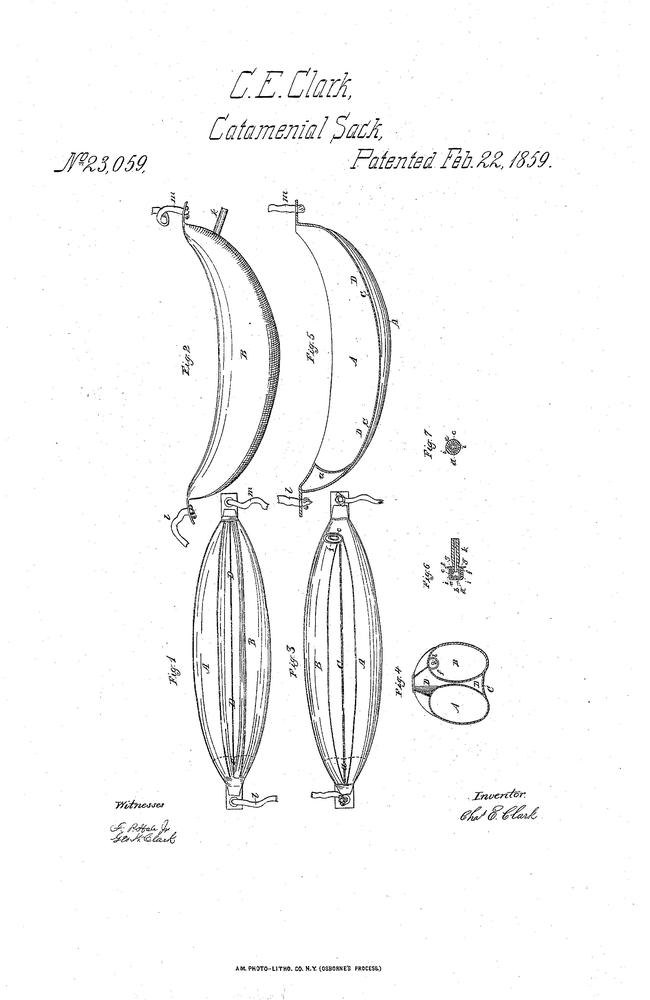What it’s like to use a menstrual cup and period proof undies
THERE’S a high ‘ick’ factor, but more and more women each month are saving a lot of money, and the environment too.
THERE’S a pretty big ‘ick’ factor with the idea of reusable ‘feminine hygiene’ for most people. Which is fair enough — you’ve got to deal with 16 litres of blood through your lifetime.
But it’s a shame more people can’t get over the ‘ick’, because you can save yourself a lot of money, and improve the environment if you invest in some reusable products to get you through your period.
I’ve recently had my first ‘green’ period — without using a single pad or tampon — and it was surprisingly easy. But you do have to be prepared.
Before getting my period, I went online and bought a menstrual cup. After considering many great options, I went with a JuJu Cup because it’s Australian-made and I wanted to limit the distance it would have to travel to get to my door.

My menstrual cup arrived in recycled packaging, and came with a blue silky storage bag. It looks like an eggcup, with a long thin stem for easier removal. I was so keen to try it out that I started wearing it a few days before my periods were due, which was a good move because like tampons, menstrual cups take a little getting used to.
The first thing I noticed was that the thin stem was too long, and poked me on the inside. If this happens to you, the solution is to cut the stem with scissors to a comfortable length. Easy! The next problem I had was that the cup seemed to keep slipping down, especially when I used the loo. It turns out that slippage is a common problem, one which is addressed on the JuJu website:
“We recommend you remove your cup when you have a bowel movement (If this is not of cause for concern for you),” the website states.
“Alternately, if you do not feel it is hindering your ability to have a complete bowel movement, you can place your index finger near the vaginal opening to hold your cup in whilst having a bowel movement and then reposition it (i.e. gently slide it back up).”
It took a couple of days to figure out how best to insert the cup and keep it there, but by the time the big day arrived I had it nailed, and am thrilled with the results. I had absolutely no leakages, no odour, and no cramps (which I usually get with tampons). I also had no rubbish to throw away, which was the whole point of getting the cup in the first place.

I did find myself in the awkward position of trying to empty the cup in a public toilet though, which was weird. Luckily, my bag had a bottle of water in it which I used to rinse the cup out before reinserting it.
I dreaded having to do this every time, but I soon realised that I didn’t need to empty the cup as often as changing a tampon, and that it could wait until I had my evening shower.
For me, the menstrual cup means I can go a whole day without thinking about my period; but my friend Rachel was not so successful.
“I’m in the middle of my first period with a menstral cup, and f**k me it’s a bloody mess!” she told me via a text message. “My cup seems to collect some blood, but I’ve had to wear pads as well. I was half way through watching Paddington Bear 2 with the kids when I could feel it leaking. I think I need those period-proof undies as well.”
I also have those “period-proof undies”, which I bought with my cup. Truly, they are the most comfortable underpants I own and I want to wear them all the time! I have the ModiBodi brand, which are made from bamboo and merino wool, and they do what they promise: absorb blood, keep it contained, and keep you dry. Caring for them is easy enough — just rinse them in the shower until the water runs clear, and chuck them in the wash.
Reusable menstrual products may seem like an outrageous idea to some, but in the history of womankind, disposable pads and tampons are a relative newcomer. The pad as we know it today was developed in the late 19th century, and by using shame as a tool in advertising, the disposable pad became the only way modern women should manage their menses.
Prior to that, there were other creations that were designed to manage menstruation, including an 1859 invention by a bloke named C.E Clark which had inflatable parts and a sponge which were held against the labia by belts and straps which attached to the waist. When one considers that this was once an option for women, the modern-day alternatives are simply genius. Not only that, but they are better for the environment, and better for the hip pocket too.

All up, it has cost about $150, which got me the cup and four pairs of period-proof underwear. This is about how much I’d spend on disposable products in just over a year, and I have another decade of bleeding to go. All in all, I can highly recommend going ‘green’ for your period. While the cup and underwear take some getting used to, they’re a lot more comfortable, cheaper, and environmentally friendly than the disposable options.
And if you’ve still got the ick factor, consider this. Centuries after you’re dead and buried, the thousands of pads and tampons you used through your life will still be around, and that really is gross.
Find Jolene on Twitter and Instagram @jolene_laverty
